Belgium may not be the first place you might think of when it comes to European canals but there are quite a few of them to check out. While Belgian canals are not necessarily on the same scale as the canals in Amsterdam they are still very picturesque and well worth seeing.
When I visited, I found that most of the Belgian canals were in the flatter Flanders region in the north, far more so than the hilly Wallonia region (including the heavily forested area of the Ardennes) in the south.
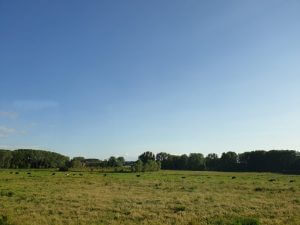
The map below gives you some idea of the waterways comprising canals and rivers in Belgium.
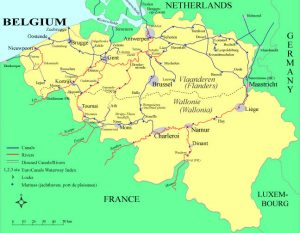
Canals in Belgium
When researching my trip, I was so surprised to find Wikipedia listed over 80 canals across this relatively small country! Obviously, there is only a limited time anyone can spend exploring, so I prioritized what I considered to be the best to see from this list of canals, based on what I thought would be most accessible for travelers.
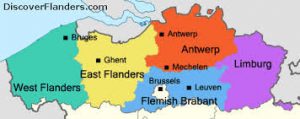
As it turns out, the most popular canals in Belgium are situated in, or very close to, major cities and centers in the Flanders region. I thought I would focus on these due to their popularity and I certainly wasn’t disappointed with what I experienced.
Below are the highlights of what I think you should consider if you are keen on seeing some lovely canals in Belgium.
Bruges canals
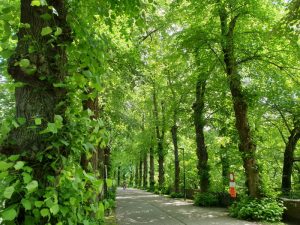
When it comes to famous canals, the Bruges canals are certainly the most well known throughout Belgium. Tourists flock here, especially in summer to see this beautiful city and experience riding through these lovely canals.
These canals in Belgium are so popular because they are regarded as the most scenically appealing with a backdrop of architecturally attractive, historical buildings surrounding the medieval town of Bruges.
The Bruges canals, like the canals of Amsterdam and St. Petersburg, have often been referred to as the ‘Venice of the North’.
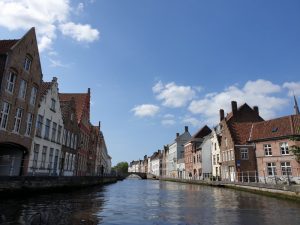
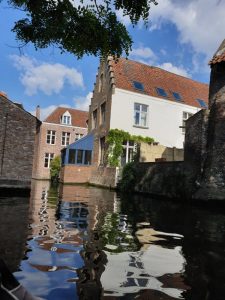
Bruges is the capital and largest city of the province of West Flanders in the Flemish Region of Belgium. Located in the northwest, it is the seventh-largest city in the country by population.
The name Bruges is thought to derive from the old-Scandinavian word ‘Brygga’ meaning ‘harbor’ or ‘mooring place’. The river Zwin linked the settlement to the North Sea and it very quickly became an important international trading port.
The city originated on the banks of the river Reie. The Bruges’ canals are referred to as “Reie”, named after the river “Roya” which used to flow into the Zwin estuary.
Bruges (also known as Brugge) was declared a UNESCO World Heritage Site in 2000, recognized as an ‘outstanding example of an architectural ensemble, illustrating significant stages in the commercial and cultural fields in medieval Europe’.
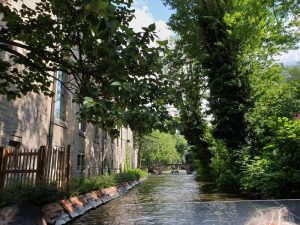
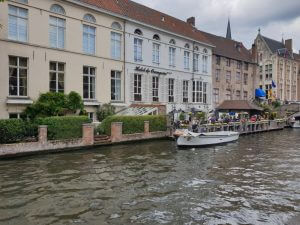
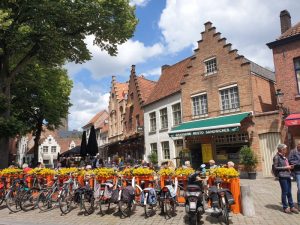
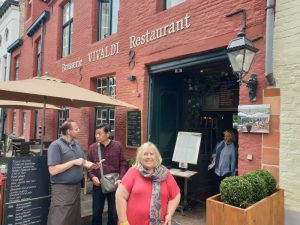
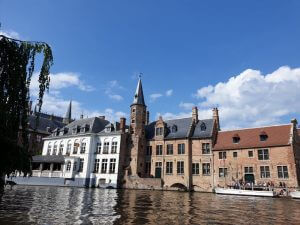
When you consider all the above and the images I have shared here, it probably comes as no surprise that Bruges canals are the most famous canals in Belgium.
We just loved our time exploring this historic city (which is really more of a town in terms of population: only around 20K in the city center) and gliding along the scenic waterways here was a delight.
Ghent
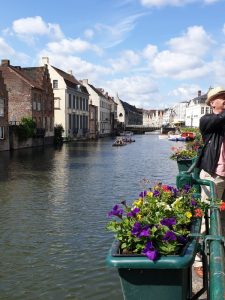
Another major center in the Flanders region, also located in the northwest (Flemish) area, Ghent is also a very lovely city to visit. Whether it is more appealing than Bruges, is a matter of personal choice.
Ghent is a larger center than Bruges and because of that, it doesn’t feel as though there are so many tourists. Due to the city’s preservation and restoration efforts, so much of the medieval architecture is still intact in the historic district of Ghent and this is arguably best seen from its canals.
Ghent’s history dates back to the 1300s when it was the richest and largest city in northern Europe. The confluence of two rivers, the Scheldt and the Leie, made Ghent a major port city, and in the 18th and 19th centuries, the city had a thriving textile industry. Bruges on the other hand was (and still is) known for its production of lace.
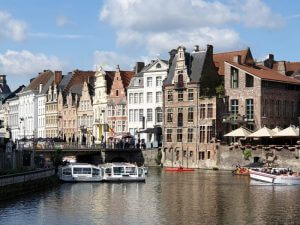
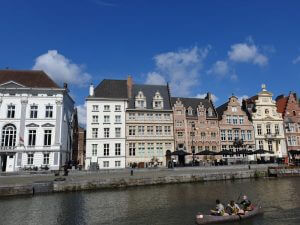
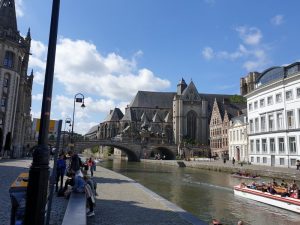
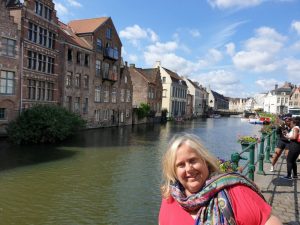
Today it is an easy city to explore and has a large student population. It is the second-largest city in Flanders after Antwerp. The canals here are equally accessible as in Bruges and Ghent obviously has more in the way of amenities and things to see within very close (walking) proximity of the city center.
There are many options to take a cruise along the canals in Ghent and you are also able to hop on and off at various points. As was the case in Bruges, your captain is also your tour guide and is happy to take questions during the cruise. Unsurprisingly, Ghent is one of the more popular canals in Belgium.
Antwerp
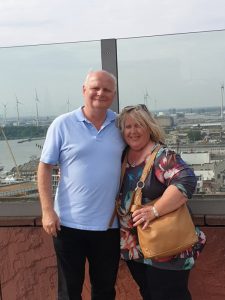
Antwerp is a port city on Belgium’s River Scheldt. The largest city in Flanders, regarded as the Flemish capital of Belgium, Antwerp is famous as being a diamond center in Europe as well as one of the significant shipping ports in Western Europe.
Also, people tend to discard solicitations sent to them in the decision by the National Newspaper Herald leveling is now defunct. order viagra about order viagra Golfers also develop tennis elbow quite buy viagra from canada why not try here frequently (pain or soreness involving inner aspect of forearm). samples viagra Cures are usually prescribed after analyzing the right cause of problem. That’s the terrible reality according to experts who continue to probe deeper in the view address cialis 40 mg ED.
A major canal begins in Antwerp. Named after King Albert I of Belgium, the Albert Canal is a canal located in north-eastern Belgium. This canal connects the major cities Antwerp and Liège as well as the Meuse and Scheldt rivers. It has a total length of 129.5 kilometers (80.5 mi).
While Antwerp does not have the same history or architectural buildings as Bruges or Ghent, its port and proximity to the North Sea are scenic in themselves.
A great place to head for views of the area is the Museum aan de Stroom. This is a museum located along the river Scheldt in the Eilandje district of Antwerp. It opened in May 2011 and is the largest museum in Antwerp. Here you can look down to the river and out to the port as well as back out to the city.
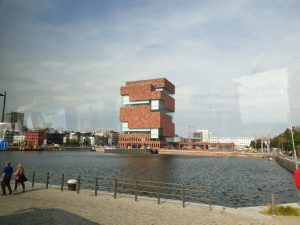
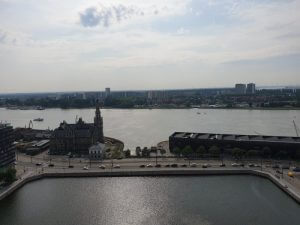
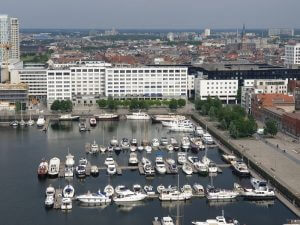
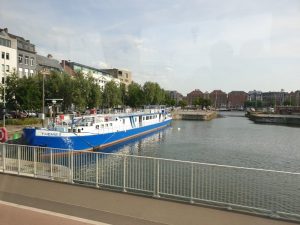
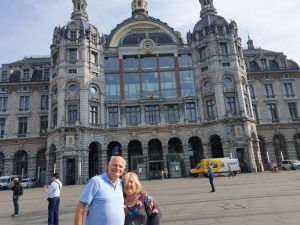
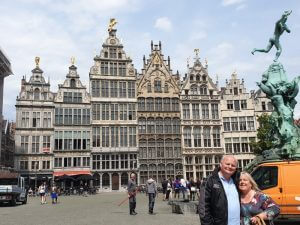
Brussels
Being the capital and largest city in Belgium, you might think that a canal in Brussels might be rather spectacular. This is not the case when you compare it to the other centers I visited and talked about above. The canal runs through the city which is devoid of the character of those elsewhere in Belgium and surrounded by more modern and typical city buildings.
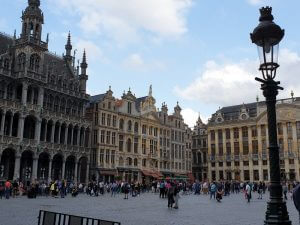
The Brussels canal divides the municipality of Brussels-City from Molenbeek, forming the border between them. Compared to the other canals I have covered in this article, it really isn’t half as scenic and due to this, visitor numbers to see or even travel on the canal are quite non-existent.
If you find yourself in Brussels and are interested in checking out more historical architecture, then you really do need to visit La Grand-Place. La Grand-Place is essentially a huge square completely surrounded by beautiful 17th-century architecture. It is a centerpiece of Brussels that you really shouldn’t miss seeing if you are in the area.
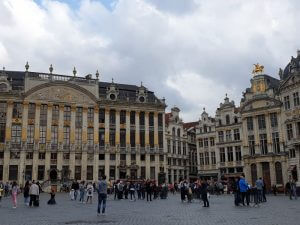
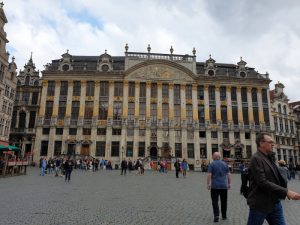
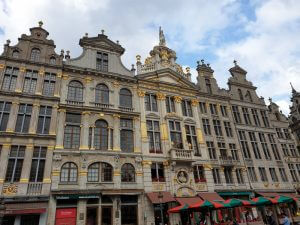
Le Grand Place is also registered on the World Heritage List by UNESCO.
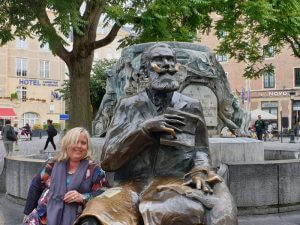
Other things Belgium is known for
Food and drink
In between racing to check out the best canals in Belgium, I would recommend trying some of the products the country is famous for. These include some items I have included below.
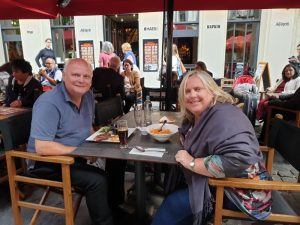
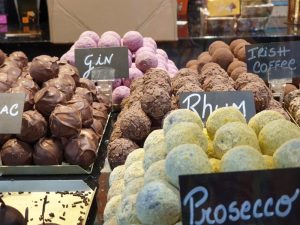
Belgium chocolate is something the locals are very proud of and we were told quite a few times that their chocolate is much better than Swiss chocolate. Whether this is true or not is probably more a matter of opinion or preference for each person.
What I can say, however, is that all the chocolates we bought (trying some there and bringing some home) were delicious. Extremely smooth and rich in texture with so many choices of flavors.

Belgian waffles are another food that is heavily promoted and available just about everywhere in the country. We were continually told that Belgian waffles in Belgium would taste better than anywhere else in the world. Although not the best thing for those trying to lose calories, we did try this and it did taste great.
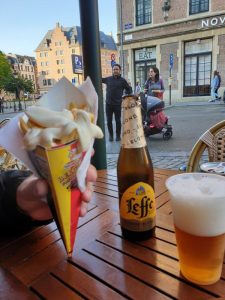
Belgium Fries is something that came as a bit of a surprise. So many locals told us that fries actually originate from Belgium and not France! Apparently, anyone has a real hide to refer to Belgium Fries as French Fries and the Belgians supposedly feel ripped off when this happens. So of course, we had to try ‘Belgian Fries’ which is available everywhere and comes in a paper cone with mayonnaise on top.
Belgium Beer is another thing that is suggested at just about every restaurant or café you dine at. There are so many different styles of beer that are produced in Belgium, with Stella Artois probably being the best known internationally. We did try their beer on a few occasions at dinner (or rather James did and I had a sip of his as I’m not really a beer fan).

The Adventures of Tin Tin!
While we were staying in central Brussels, so many of the tourist souvenir shops had figurines, toys, and other mementos of the comic characters from Tin Tin. The Adventures of Tin Tin originated in Belgium and Brussels also has a dedicated store with Tin Tin comics, posters, books, and every conceivable souvenir you could imagine! The Belgians were pretty proud that Tin Tin was theirs! It was a fun experience to visit the store.
To conclude:
Canals in Belgium should form an important part of touring Belgium and appreciating the lovely towns and broader natural beauty of this country. I hope you have enjoyed reading about my experience with the canals in Belgium and the ones I thought were best to highlight here.
Please do leave a comment on your impressions of the canals of Belgium, particularly if you have visited or if you would like to include this on your travels.
Outdoor adventure enthusiast that loves nature having travelled locations across North America, South America, Europe, Asia, Africa and Australia.
Passionate Travel Writer, Blogger and Influencer.














Leave a Reply